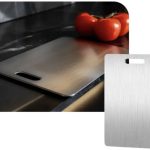
Everyone knows that flour serves as a pantry staple. With its versatility in using various kitchen needs, from baking to frying and roasting, we all want to make it last longer. Storage will play an important role in preserving the quality of your flour items. Whether you are planning to buy a stock of bread flour or all purpose flour in Singapore, it’s vital to understand the correct ways to store your flour.
Rancid flour and bug infestation are common problems attributed to improper storing of flour. Even if you plan to follow wholegrain bread recipes for cakes, you need to ensure proper storage for flours you plan to use. This article will help you discover and learn the correct approach to storing your flour to ensure the freshest flavour and quality. Without further ado, here are a few guidelines for achieving the best results:
Keep them at a low temperature.
Whether you are buying a stock of wheat or bread flour in Singapore, the main rule of thumb for storing flour is to put them in cold storage. Increasing its shelf life is easy by putting them in cold storage, which helps prevent it from going bad by keeping its natural oils. If you have extra space for refrigeration or freezer space, it’s probably the ideal place to store your flour to keep it from being rancid and kill pests. Thus if you do a lot of baking (or cooking with it), consider cold storage.
Consider a dark storage space for flour.
Light is one of the most significant contributing factors against flour since it promotes faster oxidation. Thus apart from having cold storage, have your flour placed in dark spaces to prevent a decline in quality over time. Even if you plan to use it for baking bread or following chocolate chip cookies recipes, consider storing your flour in tight, opaque containers inside refrigerators. It will help prevent light from penetrating through the container.
Label your flour according to its expiration date.
Even if you bought all purpose or Japanese bread flour in Singapore, it’s necessary to label your flour products according to their ‘best before’ label. It will help to ensure that you are not using spoiled flour. Have the flour removed from their packaging and place it in an airtight, opaque container with markings on them—indicating the ‘best before’ or expiration date. Different flours will have different shelving life, so it’s best to label them accordingly.
If you are looking for wholemeal flour benefits or other flour products for your baking needs, visit Prima Flour for more info.












